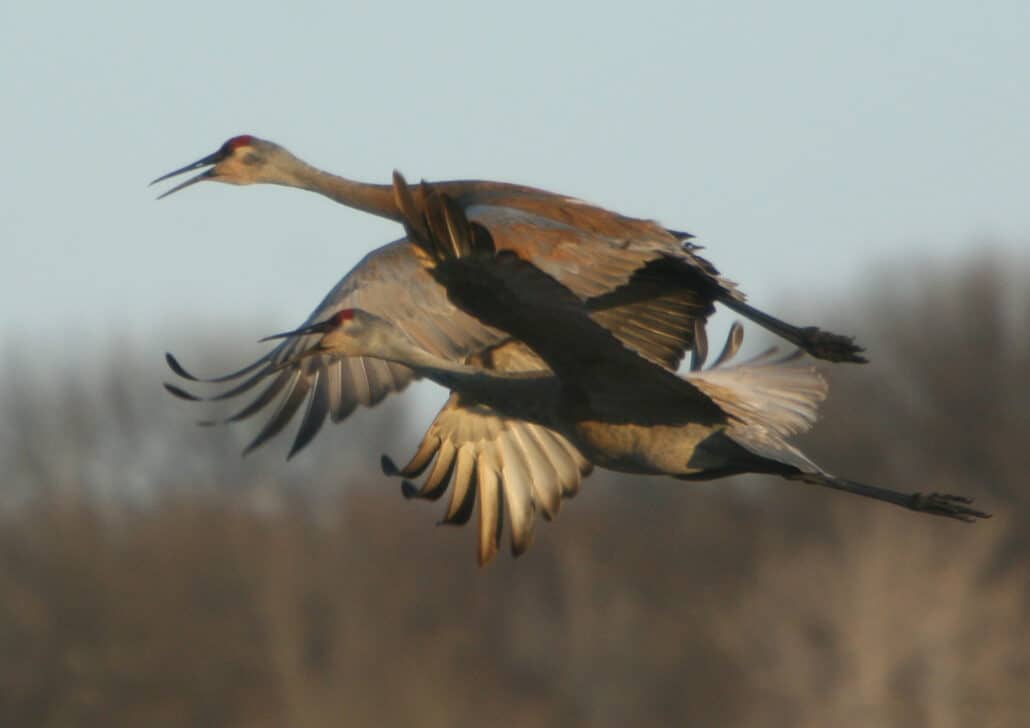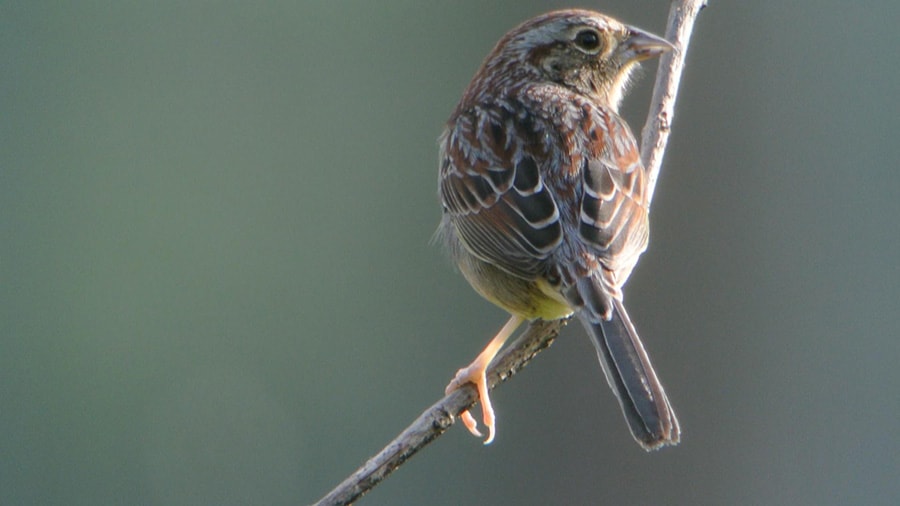Another Rough-legged Hawk winged its way over the bay. The day’s total had already exceeded 300 birds and it was just after 1:00 p.m. I had decided to come to Whitefish Point in the spring of 2000 as the official hawk counter because many fall and winter birding sites had recorded record-high numbers of Rough-legged Hawks the previous year. With so many hawks south of the Great Lakes, I hoped an unforgettable spring migration would unfold as birds returned to their breeding grounds, and I was not disappointed. The flight remained steady throughout the day, and by days end a whopping total of 525 Rough-legged Hawks had been tallied! This total, which was even more than I imagined I would witness, was higher than most season totals at other migration sites throughout North America!
Whitefish Point, located along the Lake Superior shoreline of the upper peninsula in Paradise, Michigan, is truly a spectacular birding site. Its pristine evergreen forest, mixed with birch, oak, and a dense under story, makes it bird-friendly all year-round. However, its geographic layout is what makes Whitefish Point one of the most spectacular spring migration sites anywhere. Like other well-known migration sites such as Cape May Point, New Jersey and Kiptopeke State Park, Virginia, Whitefish Point is located at the tip of a peninsula. When migrating birds encounter large bodies of water, they often opt to travel along its coastline rather than attempt a treacherous crossing. If faced with a peninsula, migrants tend to “funnel” towards the tip of the peninsula and congregate into large groups before ultimately deciding to move on.
Well to the north, Whitefish experiences a somewhat later migration than most other sites in the U.S. Northern specialties such as Great Gray Owl, Northern Hawk Owl, Rough-legged Hawk, Common Raven, Bohemian Waxwing, Pine Grosbeak, and Northern Shrike are regular migrants at Whitefish Point. The official hawk count, conducted by the Whitefish Point Bird Observatory (WPBO), is the main attraction at Whitefish. Beginning in mid-March, the hawk count starts off slowly, with Bald Eagles as the primary showoffs as they power over Whitefish Bay to Canada daily. Rough-legged Hawks start their return to the Canadian arctic breeding grounds in March as well. Whitefish Point experiences one of the most prominent Rough-legged migrations in the world each spring with as many as 3000+ counted in a single season! The persistent snow cover acts as a spotlight, illuminating the undersides of these stunning, arctic buteos as they pass overhead. The Red-tailed Hawk, Red-shouldered Hawk, and Golden Eagle movement picks up in fashion towards the end of March. ‘Dark’ Red-tailed Hawks, from western North America, are annual highlights at the hawk watch each spring.
The overall peak of the hawk migration occurs from mid-April to early May with Sharp-shinned Hawks, Broad-winged Hawks (including the occasional dark morph), and American Kestrels comprising the bulk of the count. Daily flights of 1,000+ Sharp-shinned Hawks occur almost annually. Cooper’s Hawks are much less common, and attempt to slither by cloaked within the masses of Sharp-shinned Hawks, but careful-eyed observers detect them almost daily. By springtime, many Cooper’s Hawks may exhibit a square-cut tail tip (a trait normally associated with the Sharp-shinned Hawk) due to feather wear. This creates even more difficulty when separating these two look-alike species. The Turkey Vulture, Osprey, Merlin, Northern Goshawk, and Northern Harrier all pass by in good numbers throughout April as well.
Swainson’s Hawk, Ferruginous Hawk, Mississippi Kite, Prairie falcon, and Gyrfalcon have all been recorded at least once at Whitefish Point. With one fall record, Black Vulture makes the Whitefish Point bird list as well. Non-raptors such as the Northern Wheatear, Western Kingbird, and Townsend’s Solitaire are some of the rare birds that have been spotted by keen-eyed locals. The hawk watch platform, which is elevated slightly above tree line, is the best place to witness the passerine migration and find a rarity amidst the “tidal wave” of songbirds. Overwhelming numbers of American Robins, Common Redpolls (Hoary Redpolls show up at the gift shop feeders almost daily in spring), Red Crossbills, Slate-colored Juncos, Eastern Bluebirds, and numerous species of sparrow and blackbird ‘pour’ through on most days. Pine Grosbeaks, Cedar Waxwings, Boreal and Black-capped Chickadees, and a host of warblers, swallows, and woodpeckers (including Pileated) are also common migrants.
WPBO’s water bird count records thousands of waterfowl each spring. Common and Red-throated Loons, Cormorants, geese, ducks, grebes, and gulls make up the majority of the count. Sandhill Cranes (affectionately refer to as “Craniacs” by the locals) are also tallied in large numbers throughout spring. Even in rain or fog when raptors and songbirds are scarce, Sandhills can be heard overhead and water birds can be seen flying along the shoreline.
Where forest meets coastline at the tip of the peninsula is ideal for ‘owling’. Boreal, Saw-whet, Great Horned, Long-eared, Short-eared. Great Gray, and Hawk Owl are all easy to find with little effort. While searching the woods for owls, be alert for Ruffed and Spruce grouse that may flush from the underbrush.
Hawk and Great Gray Owl are often visible roosting in conspicuous snags along Whitefish Point Rd. in daylight. Barred and Snowy Owls may also be present throughout winter. At times, the hawk watch platform gathers as many people at dusk to witness the owl migration as it does during the daytime to watch the hawk migration.
Spring and fall can be just as cold and snowy as winter along Michigan’s upper peninsula, so be prepared with winter gear. If lake effect snow happens to halt the migration, the WPBO’s gift shop is a great place to shop for birding accessories or hang out until the skies clear. The bird feeders outside the gift shop are always busy with flocks of songbirds regardless of the weather. With spectacular views, and a staggering variety of birds, Whitefish Point is an ideal site to visit. Some of my most memorable birding experiences occurred at Whitefish Point…chances are, some of yours will too.
Directions
To reach paradise from the south, take Rt. 75 north through lower Michigan. Cross the Mackinaw Bridge to the upper peninsula and take RT. 123 north. Follow Rt. 123 to Whitefish Point Rd. Take Whitefish point Rd. north to the end. From the west, take Rt. 20 east across the upper peninsula until you hit Rt. 123 north and follow the same directions to the point. There are several cabins for rent along Whitefish Point Rd. and a homegrown restaurant nearby for good eats.



